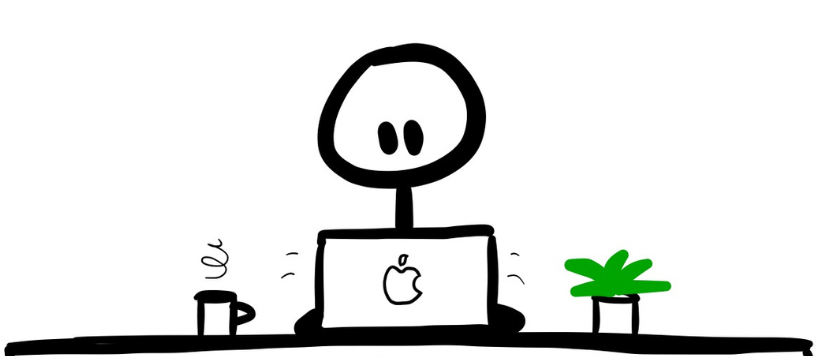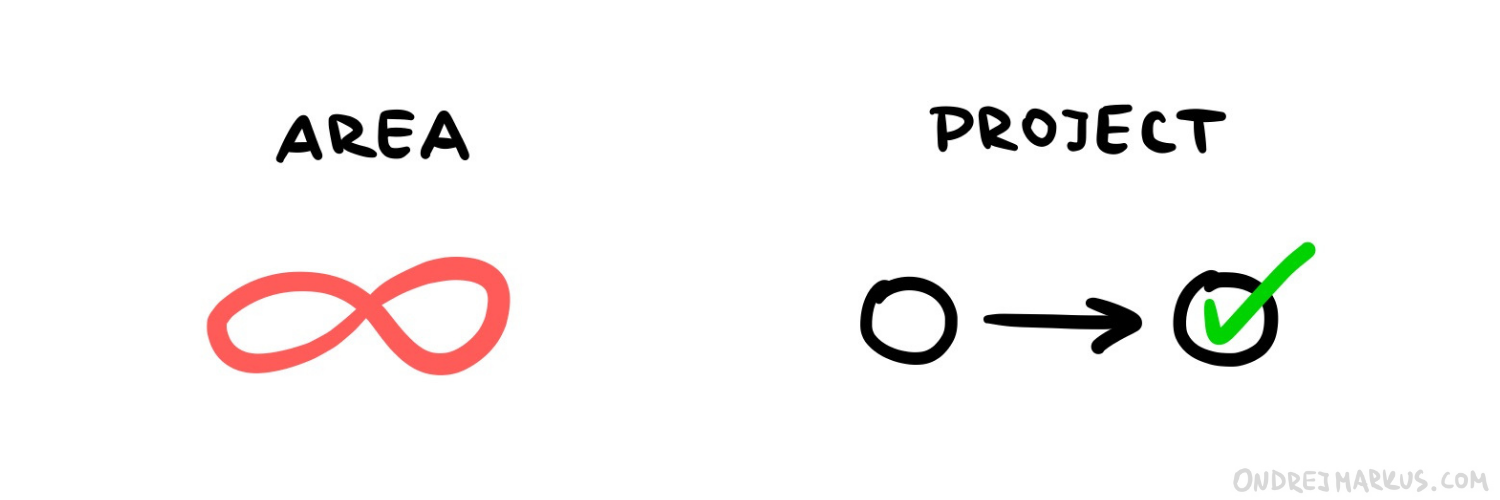Ondrej Markus
Entrepreneur in ed-tech, building the future of education as a founder and CEO at Playful.
I write about the future of education, designing learning games, and running a startup.
I'm a generalist, introvert, gamer, and optimizing to be useful.

#20: How I do my monthly review

Today, I’ll show you a monthly review of my productivity System.
November was okay but not great, so it’s a good month to share. I will go through each part of my review process and explain what’s happening and why.
The goal of my monthly reviews is to see my life and work from a higher perspective. I go through everything that happened and change what doesn’t work.
I won’t explain every detail, but I will try to make things clear enough, so you can steal whatever you like and use it in your life.
We will cover this:
- My long-term and short-term intentions
- Important areas and projects
- Results of my work in November
- My Daily Design
- What needs to change in December
Let’s go.
Intentions
Intentions come from the intersection of my needs, wants, and values. And I distill all that into as few words as possible.

Intentions come from the intersection of needs, wants, and values.
Also, I divide my Intentions into two categories:
- The Short game (3-12 months)
- The Long game (timeless)
The Short game
My Short game describes what I’m focusing on right now. It has a clear win condition and deadline.
I have only one intention for my Short game right now:
I will make a living as an independent writer.
There are specific objectives behind it:
- Milestone: I need at least $1k per month (covers my living costs)
- Deadline: September 2022 (then I’ll start running out of savings)
‘Independent writer’ is there because that’s what I enjoy doing. I want to make a living out of writing my own stuff more than anything else. The freedom in this lifestyle is priceless to me.
The Long game
My Long game is about things I expect to care about forever. It’s impossible to win the Long game, but I can try to play as well as I can. It helps me find balance.
I keep my Long game intentions as brief reminders:
- Be healthy: Eat well, Sleep well, Exercise, Meditate
- Be wealthy: Have enough, Share
- Be happy: Play, Make friends
- Be smart: Stay curious, Learn
- Be useful: Help others, Solve important problems
I don’t expect any of these to disappear, ever. Some might change a bit, or I might add something, but I would be very surprised if in 10 years I realize: “Hmm, actually, learning is useless. I’m done with that shit.”
Might happen. Probably won’t.
Anyway, these are my intentions in a nutshell. They don’t change very often, but I always check if they still make sense to me.
They do. We can move on.
Areas and Projects
Areas are ongoing commitments that require my attention on a regular basis. I divide them into Work and Personal.
Projects are one-time deliverables. It’s something I can finish and it’s done.

For example:
- Area: Writing weekly reflections and sending them out as emails is an Area because it’s an ongoing responsibility. It’s a commitment I created for myself which demands my attention every Monday.
- Project: But creating today’s reflection (what you’re reading now) is a Project because I finish it once, and I’m done with it. It’s out. It’s shipped. No strings attached.
This is how Areas look like in my notebook – a simple list with links to related notes.

My Areas page in Logseq (logseq.com)
Work and Personal areas work a bit differently.
Work areas mostly generate Projects every sometimes.
Personal areas describe things that make my life better if I do them. I know that from years of observations. I’ve been living with myself for 27 years, so I know a thing or two about what makes this brain happy.

My brain…
Areas also don’t change very often. I’m careful about adding Areas to my life because they take a bite out of my time every week. Too many bites, and I would have no time left for other things.
Still, I look at Areas every month to check if I’m dropping the ball anywhere.
This got my attention in November:
- Sleep: I slept for 10-11 hours on 4 or 5 days this month which I think is a sign of my immune system being under attack.
- Exercise: I was at the gym only four times in November. I lack a specific exercise routine.
- Money: I continued using my savings to fund my writing. My only income in November was $700 from the Innovation lab, and my total expenses were $1.000. I’m $300 lighter with a total of $5.800 in savings left.
- Fun<: I feel a serious lack of board gaming. Fix immediately. :)
I will get to Projects after I show you how Results work.
Results
I track a few critical numbers for knowing whether the System is working or not. I don’t want to fall victim to my current mood when reflecting on my life and work.
A bad mood can make a fine month seem like shit. A good mood can make a shit month seem okay. I want to avoid this bias. I want to stay as objective as possible, and I need data to do that.
Woah, don’t run away. No Excel sheets are coming. When I say “data,” I mean just a few simple numbers I write down every day into my daily note.

Filled template in my daily note (in Logseq)
This is how I collect my data:
Sleep
When I get to my laptop in the morning, I write down how many hours I slept (I don’t measure that. I roughly know when I went to sleep and woke up, and I do the math.)
Work
During the day, I track how many Pomodoros of deep work I spend on what. I use this “●" symbol to represent 1 Pomodoro (25 minutes). I do that because years ago, I filled these dots by hand on paper, and when I moved to a digital notebook, the habit of making dots just stuck with me. Plus, I like how it looks.
The daily note might end up like looking this at the end of the day:

I’m not strict about measuring the work. I work for, let’s say, two hours until I finish something, write down four dots and move on. I’m not aiming to be super precise. I’m okay with a rough number.
Joy
Lastly, I rate the day on a scale from -2 to +2. It helps me during reflection (like this one) to see whether the month was good or not (based on my rating of the individual days).
This is important because I want to enjoy my daily life. And if I’m not enjoying my days, this tells me I’m doing something wrong. Of course, it doesn’t tell me what exactly is wrong, but it’s an impulse for me to go and look.
All of these numbers are just clues, not goals. I’m very careful about that because once I make goals out of numbers, I start cheating the game. I optimize for the numbers instead of for what they should help me to do: Finish important work while enjoying the process.
My November numbers:
- Sleep: 9,2 hours on average per night (0,5 more than October’s 8,7)
- Work: 204 ● (~250 is my long-term average, so not great)
- Exercise: 11 days I did nothing, four days in the gym, the rest I went for a walk or a bike (not great)
- Joy: 0,63 on average (compared to 0,48 in October) (that’s better than I’d think – see, that’s why I do this)
Okay, but these are still just numbers. It takes me 10 minutes to count, and it gives me at least some objectivity about how November turned out.
Finished projects
The most important thing is missing. I need to know what got done. Finishing the right things is the main job of the System.
My projects in November: Finished:
- #15: How to write books as a designer (8 ●)
- #16: When introvert goes super social (5 ●)
- #17: Killing my Youtube habit (10 ●)
- #18: Rage (18 ●)
- #19: Big messy projects (9 ●) Worked on but unfinished:
- System guide (82 ●)
- Website upgrade – About page, Welcome page, Donate page (21 ●)
Also, I did 15 interviews for my book about independent work, and I ran four workshops and five 1-on-1 consultations for the Innovation lab university course. (None of that counting towards ● deep work.)
Daily Design
It’s getting long, but I need to show you this. It’s important.
All of the results I talked about are just the sum of my days. The day is where it’s all happening. I mean, it’s always today.
Daily Design is my formula for having a good day. It’s made of rules, routines, and habits I do every workday. It helps me be on top of my game, or at least as close to it as possible.
It will save me from my worst self on those days when I feel like quitting everything, getting an easy job, and watching Youtube all day. If I follow my Daily Design, my day will be okay.
I won’t describe my Daily Design in detail because that would take another 2000 words. But here are some of its most essential ingredients:
Daily Design (highlights)
- Top rule: No meetings before noon
- Top habit: Journaling every morning
- Top routine: Doing my most important work first every day (writing)
These and other tactics work together to help me finish the right things while enjoying the process.
I’m pleased with how my Daily Design works these days. The proof is that, despite feeling like November wasn’t good, numbers show I managed to make it pretty productive.
That’s a win I owe to my System.

My System saves my ass every month.
Summary
The final question of the month is always:
What works and what doesn’t work in my System?
This is a list of what doesn’t work and how I changed it for December.
Changes for December:
- Health: I will increase my focus on exercise → I will design a specific training routine
- Projects: I will start writing the System guide like a designer instead of trying to finish it in one piece (which got me badly stuck). I might publish articles as prototypes of chapters. And I will test expanded outlines with readers.
- Fun: I will organize a weekly board-gaming group to scratch my gaming itch.
Overall, the System works well. I’d say 8.5/10.
That’s it.
I left out a lot of details, so you probably have questions. Email me, and I’ll answer everything. I love this stuff.
Offer: If you are thinking: “Damn. I could use a better system myself.” You’re in luck. I offer free consultations to help you build a productivity system that works for you. Limited capacity: get in now.
See you next week,
Byyye